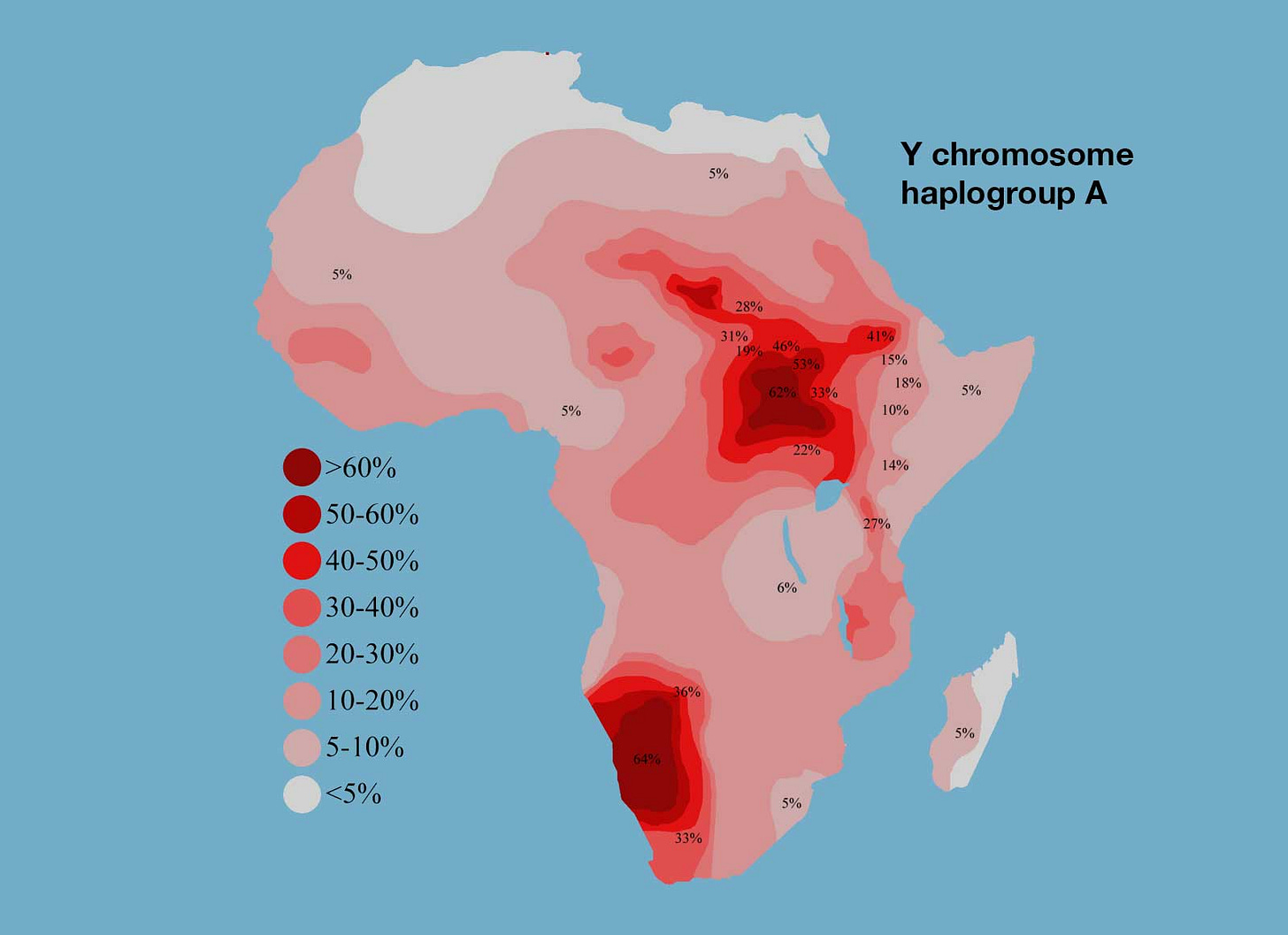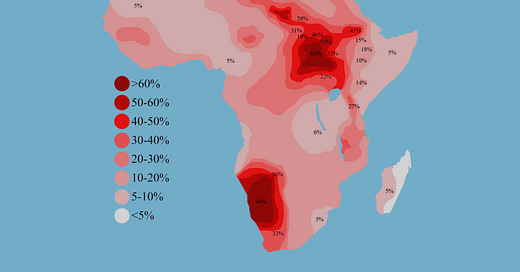How much do Y chromosome haplogroups shape our views of modern human origins?
The divergent A00 haplogroup roots the modern human Y chromosome tree deeper in time.

Earlier this month I published a piece on Medium about our changing picture of modern human origins in Africa: “Three big insights into our African origins”. There really have been amazing changes during the last few years, and those comments–directed at geneticists–raise many questions about the way forward.
Last year, after the announcement of redating of hominin material from Jebel Irhoud, Morocco, I had a reader question that is very relevant to this topic:
Is the recent redating of "anatomically modern humans" and the reclassification of North African Archaics (like Jebel Irhoud) in part a response to the finding of the introgressed A00 haplogroup?
This is a great question. It’s hard to say exactly what goes into the background of people’s thinking. The data that tell us something about “early modern” humans has just changed enormously in the last five years.
The A00 haplogroup was described by Fernando Mendez and colleagues back in 2013 (https://doi.org/10.1016/j.ajhg.2013.02.002). It is a Y chromosome branch that seems to diverge from the rest of the modern human Y chromosome tree between 240,000 and 580,000 years ago. It’s found today in some Mbo men from present-day Cameroon, and some African-American men.
That’s very early compared to the rest of the Y chromosome tree. It is not very early compared to the autosomal genome, which shows that African populations started to become genetically differentiated around 300,000 years ago or so.
There’s a suspicion that this haplogroup may have entered recent human populations by interbreeding with a more ancient, diverged branch of archaic humans. It’s possible. The story of African “archaic” humans today is intricate, because we have just enough data to raise questions and not enough data to answer those questions.
For example, the Iwo Eleru skull fragment, from Nigeria, is a specimen that we now recognize is less than 16,000 years old, but is archaic-looking in some details of its anatomy (https://doi.org/10.1371/journal.pone.0024024). Maybe this is a late-surviving pre-modern human population in West Africa that contributed to today’s people in some degree.
There is evidence for “ghost population” contributions to West African people, and central African hunter-gatherers. All of this evidence comes from statistical examination of genomes of living people, and different research groups have come to different conclusions – some point to multiple admixtures, from very ancient, diverged groups that may have been as different as today’s people from Neanderthals, but all within Africa.
Others point to a possible “pre-modern” population, an outgroup to all of today’s modern people but maybe only 400,000 or 500,000 years diverged, that contributed a much bigger fraction of West African genetic ancestry today. I think there’s a good chance that the Jebel Irhoud hominins belonged to such a “pre-modern ghost” population. The anatomy of these crania is not what I think the common ancestor of all of today’s African populations probably looked like. But that’s a guess.
It’s going to be a while before these studies start to converge on a single picture, because they’ve been using different samples and different methodologies.
Honestly, I think the Y chromosome haplotypes are not coming into people’s thinking. The reason for this is that most people now recognize that the uniparental lineages, the mtDNA and Y chromosome, are not very helpful once you get back into the initial stages of diversification of today’s African populations.
The A00 haplogroup does not seem to mark that early diversification, because it isn’t present in Khoesan as far as we know. And if our mtDNA mutational timeline is correct, the autosomal differentiation of Africans started long before the mtDNA “Eve” lived.
Personally, I think these uniparental systems are probably reflecting natural selection on various haplogroups, and the introgression dynamics are driven by their fitness in different environments and genetic backgrounds.



